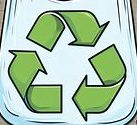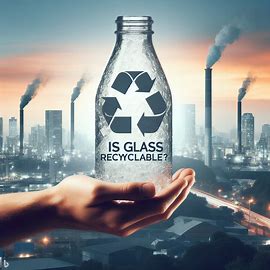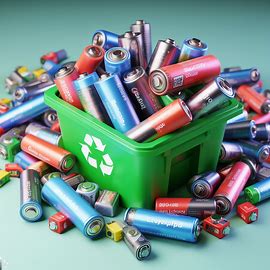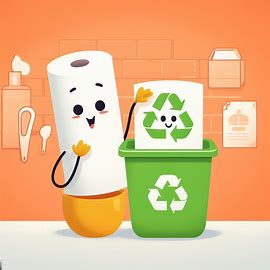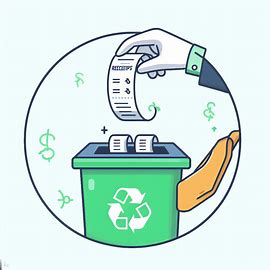Can You Recycle Pizza Boxes? A Detailed Guide
When it comes to recycling, many of us diligently separate our paper and cardboard from our trash. But what about those pizza boxes that often find their way into our homes? Can you recycle pizza boxes, or should they be relegated to the landfill?
The short answer is yes, you can recycle pizza boxes, but there are some important caveats to consider to ensure that your recycling efforts are effective and environmentally friendly.
Understanding the Basics
Pizza boxes, typically made from corrugated cardboard, are indeed recyclable. However, there are a few critical factors to take into account to ensure they are eligible for recycling:
1. Cleanliness
The key to recycling pizza boxes lies in their cleanliness. To be recycled, pizza boxes must be free of food residue, grease, and any other contaminants. Even a small amount of grease can compromise the recycling process, making the entire box unsuitable for recycling.
2. Toppings and Extras
While the cardboard portion of the pizza box is recyclable, other items like plastic lids, paper napkins, or condiment packets that may come with your pizza should be removed and disposed of properly. These items often cannot be recycled alongside cardboard.
3. Tear or Cut
If your pizza box is heavily soiled or has a particularly greasy section, consider tearing or cutting away the contaminated portions. The clean cardboard can still be recycled, while the soiled parts should go into the trash.
The Recycling Process
Once you’ve ensured your pizza box is clean and free from contaminants, you can confidently place it in your recycling bin. The recycling process for cardboard involves breaking down the fibers in the cardboard to create new products. The cardboard is pulped and mixed with water to create a slurry, which is then formed into new cardboard sheets.
Municipal Guidelines
It’s important to check with your local recycling program for specific guidelines on recycling pizza boxes. Different municipalities may have slightly different rules, so it’s always a good idea to familiarize yourself with local regulations. Some areas may accept pizza boxes without any grease contamination, while others may have stricter guidelines.
Composting as an Alternative
If your pizza box is too soiled for recycling due to excessive grease or food residue, consider composting it instead. Many composting facilities can handle cardboard that is contaminated with food waste. Be sure to check if your local composting program accepts pizza boxes and follow their guidelines.
Additional Important Points
Certainly, here are some additional important points to consider when it comes to recycling pizza boxes:
1. Paper vs. Corrugated Cardboard
Pizza boxes are typically made from corrugated cardboard, which is recyclable. However, it’s essential to distinguish between corrugated cardboard and paperboard. Paperboard pizza boxes, which are typically used for small frozen pizzas, may not be as easily recyclable because they are often coated with a layer of plastic or wax to prevent grease absorption. Check with your local recycling program for specific guidance on paperboard pizza boxes.
2. Flatten the Box
To maximize space in your recycling bin and make it easier for recycling facilities to process, it’s a good practice to flatten pizza boxes before placing them in the recycling bin. This not only saves space but also ensures that other recyclables can fit in the bin as well.
3. Don’t Bag Pizza Boxes
Avoid placing pizza boxes in plastic bags or garbage bags within the recycling bin. These bags can disrupt the recycling process and should be kept separate from recyclables. Instead, place the flattened pizza boxes directly into the recycling container.
4. Learn the Local Rules
Recycling guidelines can vary from one locality to another. Some areas have specific rules for pizza box recycling, while others may not. It’s crucial to be informed about the recycling guidelines in your community to ensure you’re following the correct procedures.
5. Non-Greasy Parts Are Recyclable
If only a part of your pizza box is contaminated with grease, remember that the clean portions of the cardboard are still recyclable. Separating the clean from the soiled sections and recycling what you can is an eco-friendly choice.
6. Education and Awareness
Encouraging awareness about proper pizza box recycling among family, friends, and coworkers can have a positive impact. Sometimes, simple actions like informing others about recycling guidelines can lead to collective efforts to reduce waste.
7. Support Local Recycling Initiatives
Consider supporting local recycling programs and initiatives that promote recycling and reduce contamination in recycling streams. These programs often provide valuable resources and guidance on proper recycling practices.
8. Sustainability Beyond Recycling
While recycling is essential, it’s also important to consider other sustainability practices, such as reducing waste by ordering only what you can consume, choosing pizza boxes made from recycled materials, and supporting businesses that use eco-friendly packaging.
By following these additional points and being mindful of the cleanliness and condition of your pizza boxes, you can contribute to more effective recycling practices and reduce the environmental impact of your pizza consumption. Recycling is just one part of a broader effort to create a more sustainable future for our planet.
FAQ’s
1. Can I recycle a pizza box that has some grease stains on it?
It’s best to recycle pizza boxes that are free from grease and contaminants. If only a small portion is stained, you can tear or cut away the soiled area and recycle the clean cardboard.
2. What should I do with the plastic lid that comes with my pizza box?
Plastic lids, as well as other non-cardboard items like napkins or condiment packets, should be removed and disposed of in the appropriate waste bin. These items typically cannot be recycled with cardboard.
3. Can I compost a pizza box that’s too greasy for recycling?
Yes, if your pizza box is heavily soiled with grease or food residue, you can consider composting it if your local composting program accepts it. Be sure to follow their guidelines for composting cardboard.
4. Are there any special requirements for recycling pizza boxes in different municipalities?
Yes, recycling guidelines may vary by location. It’s essential to check with your local recycling program for specific rules regarding pizza box recycling in your area.
5. Can I recycle the pizza box if it has been torn or damaged during delivery?
Yes, as long as the cardboard is relatively clean and free from contaminants, you can still recycle a slightly damaged pizza box. Recycling facilities can process cardboard with minor tears or creases.
6. Is it necessary to remove any labels or stickers from the pizza box before recycling?
In most cases, you do not need to remove labels or stickers from the pizza box before recycling. These small items are typically processed along with the cardboard during recycling.
7. Can I recycle a frozen pizza box, or are there different rules for them?
Frozen pizza boxes are generally recyclable, but you should still ensure they are clean and free from contaminants. The same guidelines for regular pizza boxes apply to frozen pizza boxes when it comes to recycling.
Conclusion
In summary, pizza boxes can be recycled, but cleanliness is paramount. Ensure your pizza box is free from grease and contaminants, and remove any non-cardboard components like plastic lids or napkins. If your pizza box is too soiled for recycling, consider composting it if your local composting program allows for it. By following these guidelines, you can do your part to reduce waste and minimize the environmental impact of your pizza nights. Remember, every small effort counts in the quest for a more sustainable future.
